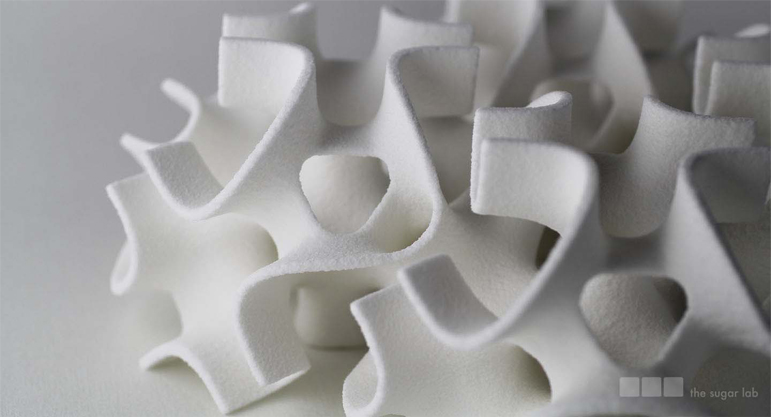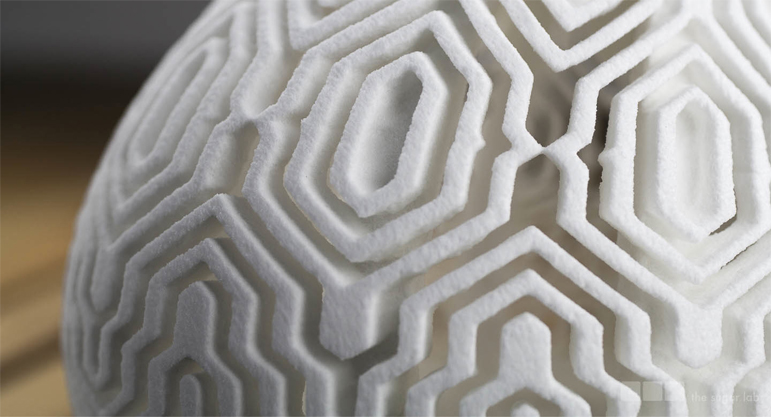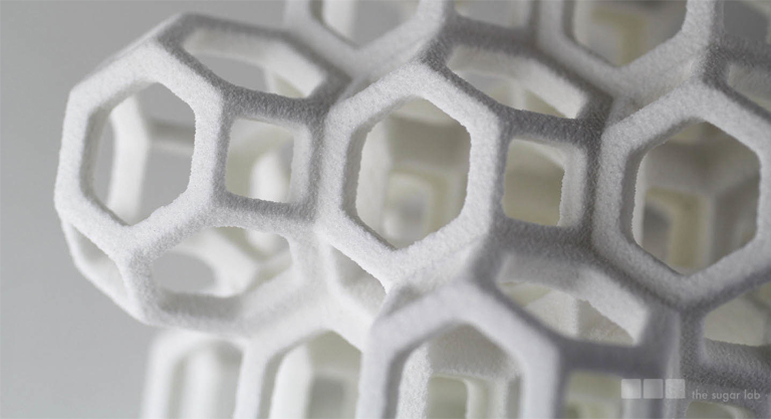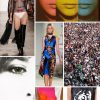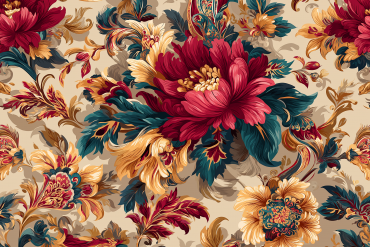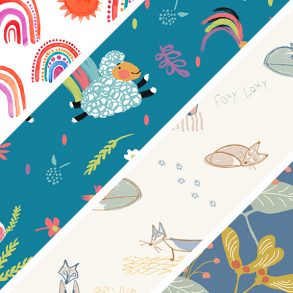It is Pattern Industry Month here at Pattern Observer, in honor of our 2013 Pattern Industry Survey. If you haven’t had a chance to fill out the survey yet, be sure to head on over to the survey page and tell us about your experiences in this industry! (Survey now closed, results available here!)
This month we are sharing the work of some seriously talented designers, and diving into all the incredible ways in which patterns can be used. I am amazed daily by the new and inventive ways designers find to use patterns in their work. For many of us in this industry, our designs exist in two dimensions, but technology is beginning to open up the possibilities to include new ways of integrating pattern and 3D forms. One such technology is the recent explosion of 3D printing. The possibilities of 3D printing are seemingly limitless, and today’s interview will shed some light on an exciting niche in this burgeoning industry. Let me introduce you to The Sugar Lab, a Los Angeles-based design firm run by my dear friends, Liz and Kyle von Hasseln. The images you see here are edible–they are created with 3D printed sugar! Read on to learn more about their awesome work.
Tell us a bit about The Sugar Lab. What is a typical day like for you in the studio?
We run The Sugar Lab out of our live/work space in Silver Lake, CA. Kyle and I spend most of our day sitting next to each other at a long built-in plywood desk, hunched over our trusty MacBook Pros. All of our work is custom, so a given day really depends on who we’re working with at the time, and where we are in the process. Each project starts by talking to a client about what they’re excited to see in sugar. After some brainstorming and messy hand sketching, we work to translate our ideas into 3D digital models. The modeling process is fairly involved, so that’s how we spend the largest percentage of our time (hence the hunching). When everyone’s excited with the concept, we’ll do some test printing to make sure the geometry works well in sugar, and then we’ll start to print the final pieces. 3D printing in general is kind of a magical process, so it’s always fun to see the geometry emerge in sugar, after considering it on the screen for so long.
Could you tell us about the process of printing a sugar model?
If you’ve ever made frosting and left the mixing bowl in the sink overnight, you know that moistened sugar gets quite hard. That’s the underlying concept of 3D printing with sugar. We use a mixture of water and alcohol, applied very precisely in a layer-wise manner, to selectively wet and harden the sugar substrate. The process is fundamentally similar to other 3D printing applications, we’ve just optimized the process for resolution and strength with sugar, rather than with a standard 3D printing material.
Are there any limitations to what you can create due to the properties of sugar? How does the material influence the way you design?
There definitely are design limitations. Sugar isn’t as strong as 3D printed plastic, for example, prints that are too top heavy could break under their own weight. Our backgrounds in architecture have helped us to develop design instincts for integrating structural and facade elements into single 3D printed sugar sculptures. There are also more secondary design elements related to 3D printing sugar like color, taste and surface texture that come into focus when you work with sugar. People have expectations about what food looks, tastes, and feels like, and its really important to hit those notes, otherwise you have a cool design, but it might not look like dessert.
What made you decide to use sugar?
It was your birthday!! Chelsea, I should probably explain, is Kyle’s brother’s girlfriend and our great friend. A few years ago, when Kyle and I were still in grad school, Chelsea’s birthday was coming up and we really wanted to bake her a cake, but we didn’t have an oven in our tiny Echo Park apartment. So we decided to try to 3D print a cake for her, instead. It took some trial and error, during which we missed Chelsea’s actual birthday (sorry Chel!), but we managed to print a simple cupcake topper that spelled out ‘Chelsea’ in cursive sugar. She loved it so much that we started seriously considering how interested other people might be in 3D printed sugar. When we graduated, we decided to start a mini design firm for 3D printing custom sugar.
What would you consider to be your greatest achievement so far in your business?
The most exciting project we’ve tackled yet is probably one that we’re working on currently–we’re very excited to be collaborating with some seriously talented cake artists at a well-known bakery in Hollywood to design a four-tiered wedding cake with a 3D printed sugar cake-stand, and 3D printed sugar-tiers supporting cake tiers. It will be a traditional cake silhouette in which sugar plays anything but a traditional role. That’s an exciting part of 3D printing sugar for us–transforming sugar into a structural, sculptural medium that can start to define the form of the food instead of the other way around, and even to support it structurally.
Do you have any advice for designers who are just starting out and looking to find their niche in the design world?
We got some really good advice from one of our professors once. She told us that the key to getting satisfying work as a designer is to just pick something–anything–that isn’t already a huge design category, and just start designing that.
You can see more from The Sugar Lab at their website or Facebook page. And for more 3D inspiration, including recent runway images, check out our 3D Trend board on Pinterest. -Chelsea

